Hello, I’m Ylli Bajraktari, CEO of the Special Competitive Studies Project. In this edition of 2-2-2, SCSP’s Pieter Garicano discusses what we know about the PRC’s fusion energy efforts and recaps SCSP’s fusion week.
We are thrilled that so many of you are joining us for this first-of-its-kind event on May 7th & 8th in Washington, D.C. If you haven’t registered for SCSP’s AI Expo for National Competitiveness, don’t wait!
In 33 days, we will witness a national convergence of leaders, innovators, technologists, warfighters, students - a powerhouse of minds - at the Washington D.C. Convention Center.
This morning, we announced Rhombus Power, Skydio, Stairwell, Strider Technologies, and Booz Allen Hamilton are joining us as sponsors of the AI Expo. SCSP Chair, Dr. Eric Schmidt will be joined by Deputy Director of CIA, David S. Cohen, and Co-Founder and CEO of Palantir, Dr. Alex Karp, for a conversation on The Future of Geopolitics and the Role of Innovation and Technology at The Ash Carter Exchange. Organizations like the International Institute for Strategic Studies (IISS), National Endowment for Democracy (NED), and Truepic are partnering with us to host special events at the AI Expo. Get the latest information at expo.scsp.ai.
Nuclear fusion is having its day in the sun. Over the last few months, scientists have touted breakthroughs at Lawrence Livermore National Laboratory, the successful use of AI to accelerate fusion research, spiking datacentre energy demand, new German and Japanese R&D efforts, and a record-breaking burn at a British lab. All indicate that the long-awaited realization of power generation through controlled nuclear fusion may be inching closer.
And while many scientists involved still seek to temper expectations, it is clear why fusion provokes such excitement. Nuclear fusion, where light atomic nuclei combine to form heavier ones, releases tremendous amounts of energy. It promises clean, near-limitless power – supercharging energy independence for America and its allies, decarbonizing the grid, and enabling every other technology vertical.
Its ability to provide abundant carbon-free baseload power will make it a much sought-after technology export. In the long term, fusion leadership may well become one of the pillars determining the outcome of the strategic competition between the United States and China.
Unfortunately, Beijing recognizes this. The People’s Republic of China State Council has declared that “controlled nuclear fusion is the only direction for future energy” and a list of ‘future industries’ released this January by the Ministry of Science and Technology and six other ministries prominently includes nuclear fusion. Yet, China’s fusion efforts go beyond statements. On the ground, the PRC is out-investing, out-organizing, and out-building the United States across the fusion ecosystem.
China’s Fusion Roadmap
Alone, the headline figures around the PRC’s fusion efforts are significant. The Department of Energy estimates that China spends around $1.5 billion per year on fusion, compared to the U.S. government’s $763 million in 2023. By 2023, according to research firm Astamuse, China had surpassed the United States in both the total number of fusion patents and in a ranking that assessed quality as well as quantity.
To some, those statistics do not convey the true gap in efforts. Much of the United States’ funding goes towards basic research off the path to commercialization. ITER – a much-delayed international collaboration on a fusion reactor that will likely only provide its first test results in the late 2030s – alone received nearly 31% percent of U.S. fusion funding in 2023. Including ITER, by some estimates, nearly two-thirds of USG fusion funding goes towards ‘legacy’ projects that will not be directly relevant to scaled commercial fusion.
Beijing, by contrast, is focused on delivering a short-term plan to deploy fusion and capture the fusion supply chain. In the current 14th Five-Year Plan the construction of “critical systems of fusion reactors” is one of the state’s Major National S&T Infrastructure priorities.
The PRC’s roadmap revolves around rapidly delivering a set of intermediate reactors and test facilities that will bridge critical engineering challenges on that way to what China calls China Fusion Engineering Test Reactor (CFETR) – a demonstration reactor slated for completion in the early 2030s that will aim to generate over a gigawatt of fusion power and produce nearly 30 times the energy put into the fusion reaction (the U.S.-based National Ignition Facility, for comparison, has likely not yet yielded 3 times the energy put in).
While the U.S. has developed fusion roadmaps before, the Chinese plan stands out for its pace and delivery. As U.S. fusion researchers like to say, ‘China took our fusion plan and decided to build it.’ The Hefei-based Comprehensive Research Facilities for Fusion Technology (CRAFT), a multi-hundred million dollar campus the Fusion Industry Association calls a ‘fusion national lab’, has already finished construction.
When fully operational in 2025, it will offer over four million square feet of laboratory space dedicated to bridging known fusion engineering challenges including material stability, coil-testing, high-temperature superconductors, and tritium breeding and handling.
Source: Jean Paul Allain, Building Bridges: A Bold Vision for the DOE Fusion Energy Sciences, U.S. Department of Energy (2023).
While completing CRAFT, China has started construction of the Burning Experimental Superconducting Tokamak (BEST) reactor – a second key step in the Chinese roadmap. Relying on superconducting magnets – a similar approach to that of American firm Commonwealth Fusion Systems – BEST could achieve the first net-energy gain in a tokamak reactor.
While other Tokamaks such as ITER have stagnated and run into delays, BEST is rapidly moving ahead. Satellite images of the CRAFT site in the city of Hefei show the groundbreaking of a major construction site next door – with the same layout and location as concept art of the BEST campus. Projected to reach initial plasma at the end of 2027, BEST will soon represent the global leading edge of deployed magnetic-confinement fusion (MCF) technology and set Beijing up for the completion of CFETR a few years later.
Satellite imagery of the existing CRAFT laboratory appears to show the foundations for the BEST reactor on the left. Source: Google Earth (satellite image provided by Maxar Images, Airbus) (November 20, 2023).
Looking Ahead
Despite China’s surging efforts, there remain fusion areas where the United States continues to lead. In SCSP’s recently released National Action Plan for U.S. Leadership in Next Generation Energy, we included a ‘comparative analysis’ of U.S./PRC leadership across different energy technologies. We concluded that despite the industry trending towards PRC, the United States is still ahead in fusion.
This lead is primarily grounded in proficiency in basic science. American plasma researchers are first-in-class, exemplified by the quality of the research happening at universities and the efforts taking place at the Lawrence Livermore National Laboratory, which in 2022 achieved the first – and so far only – net energy gain reaction. Unlike China, the United States also has a vibrant commercial ecosystem that has raised billions of dollars. Some more ambitious commercial firms target fusion (demonstration) timelines similar to those announced by the PRC.
But even if the United States succeeds in developing and deploying the world’s first fusion pilot plant, there is the risk that American engineering breakthroughs fail to secure U.S. leadership. As the history of the fission industry shows, scientific success does not always translate into societal progress. Scaling novel energy technologies requires a cohesive effort from stakeholders throughout the ecosystem, from suppliers of raw materials to utilities.
We see signs that the PRC is building out this organizational infrastructure. In December 2023, Beijing announced a national fusion energy consortium led by China National Nuclear Corp. (CNNC).
On paper, it will unite China’s efforts into a single entity and bring together the State-Owned Enterprises and utilities that will be responsible for scaling and deployment, including State Grid Corporation, China Baowu Steel Group Corporation, China Aerospace Science and Industry Corporation, and the China Three Gorges Corporation – of Three Gorges Dam fame. In the United States, such state-led efforts are absent. Where there is progress – such as in a recent deal between the Tennessee Valley Authority and fusion firm Type One – it is often the product of bespoke local initiatives, not national coordination.
Beijing is also pushing ahead in the fusion supply chain. A range of U.S. firms currently rely on Chinese suppliers for bespoke and off-the-shelf fusion equipment, including microelectronics and rare earths. A recent report by the Fusion Industry Association on the fusion supply chain notes that the PRC is a source of not just “commodity parts, but also of specialty components.” In a worst-case scenario, American firms may end up unable to procure the necessary components to translate engineering breakthroughs into a large number of viable reactors.
Whether these scenarios pan out will depend on how Beijing treats the industry going forward. Currently, Chinese fusion efforts are still largely happening in the open. Research papers are regularly published and shared with international researchers. The Director-General of the Chinese Institute for Plasma Physics gave a presentation to a U.S. audience on PRC fusion plans just a few months ago. If that level of openness ceases, it will likely be a clear indicator that something has changed. It also means U.S. policymakers will have less information just when they need it most.
Fusion breakthroughs will likely continue accelarating in the next few years – with increasing numbers taking place in China. But whether the PRC actually overtakes the United States in fusion is not their decision alone. Thanks to a range of factors – our leadership in R&D, network of national labs, and vibrant commercial ecosystem – nuclear fusion is a technology that the United States can still choose to win. But doing so means urgently recognizing the speed at which the PRC is delivering plants, preparing for scaling and developing the supply chain – and deciding to build the roadmap Beijing has copied.
SCSP “Fusion Week”
To highlight the role of fusion energy in the strategic competition, SCSP took part in an unofficial D.C. Fusion Week which ran from March 18th to 22nd. As part of the week's events, SCSP organized a discussion that brought together a group of representatives from the fusion industry, scientific community, and government to discuss China's rapid progress, and attended the Fusion Industry Association’s annual policy conference, where our President and CEO, Ylli Bajraktari, delivered remarks on the race for fusion.
From left to right, SCSP’s Pieter Garicano, Ylli Bajraktari, and Addis Goldman at the FIA annual policy conference.
Ylli Bajraktari delivering his keynote at the FIA policy conference.
In addition, SCSP hosted Dr. Tammy Ma, Lead of the Inertial Fusion Energy Initiative at Lawrence Livermore National Lab to deliver a briefing to our staff. It was great to hear the story behind the National Ignition Facility (NIF’s) historic fusion breakthrough last year, and the road ahead for fusion energy at the national labs.
Dr. Tammy Ma (LLNL), Dr. Brian Spears (LLNL) and SCSP staff.
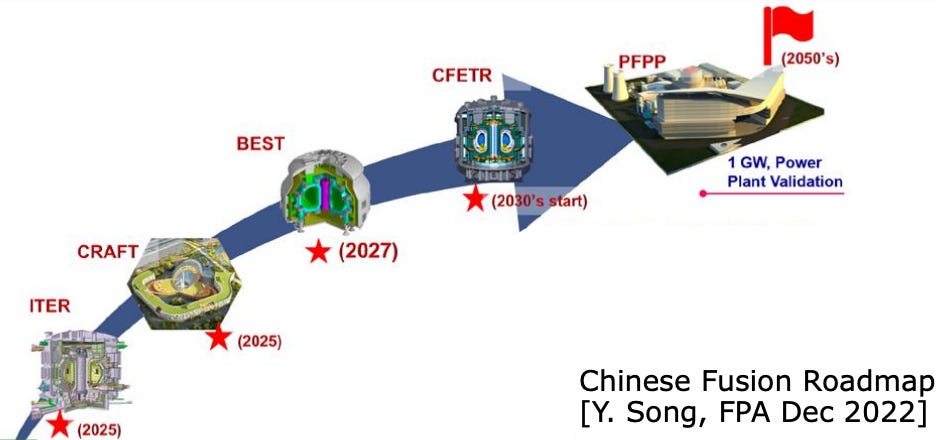
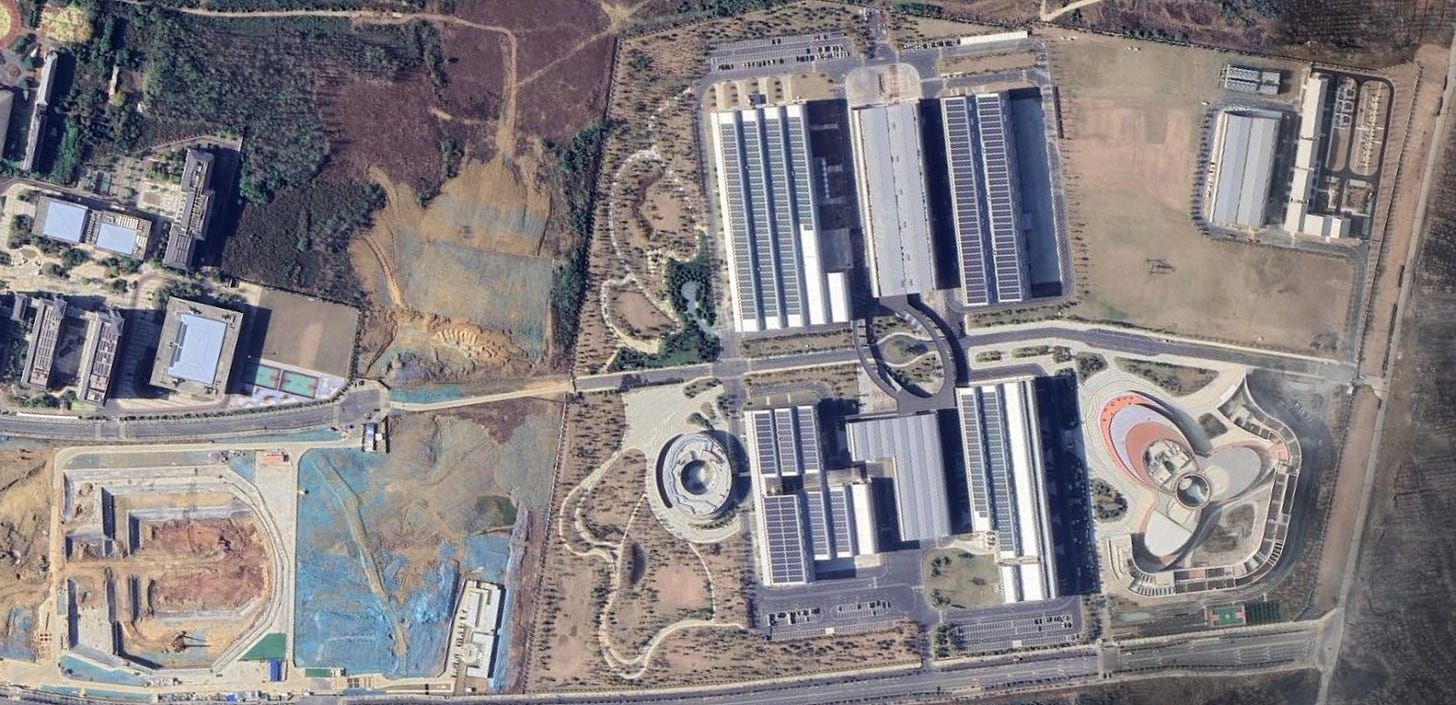
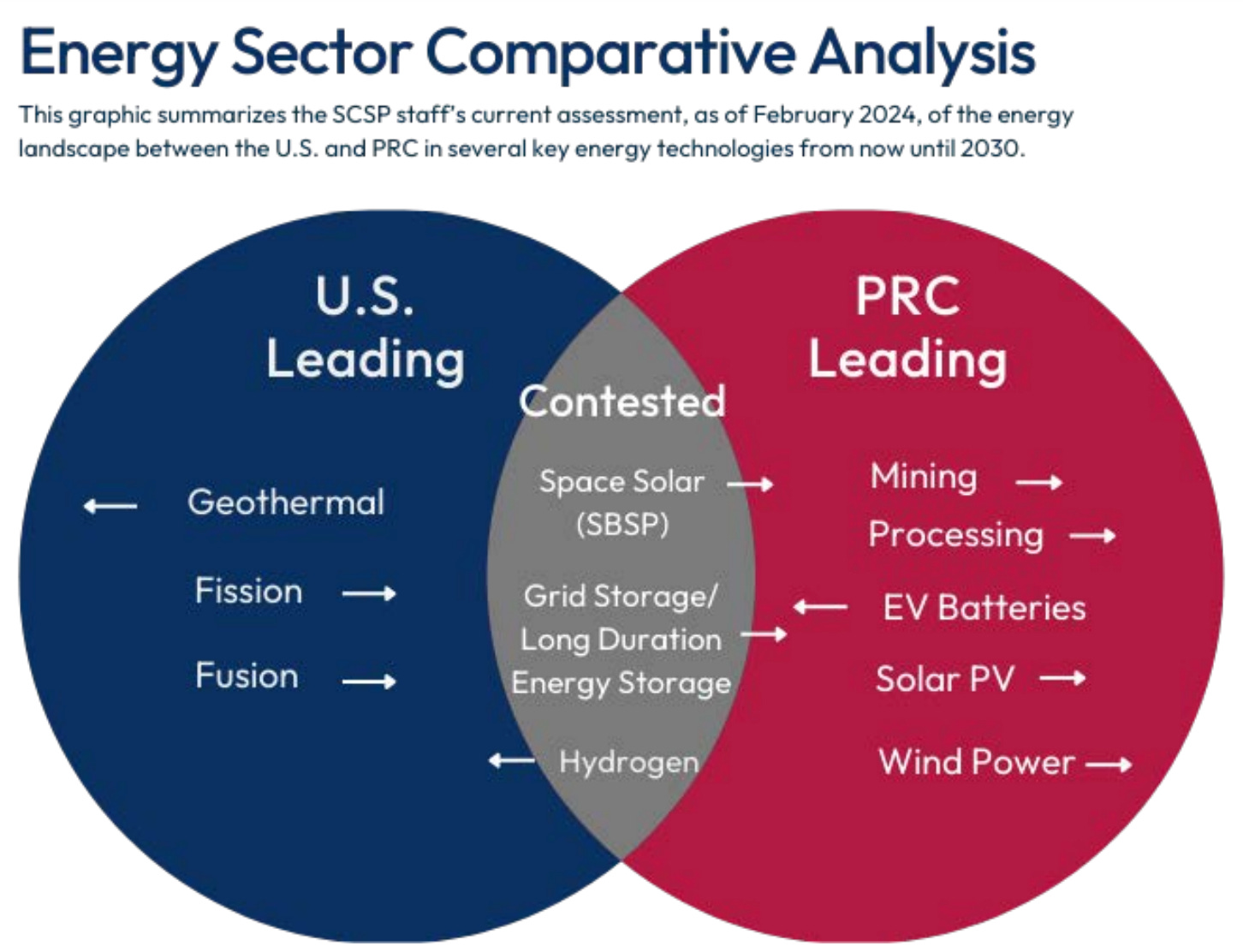
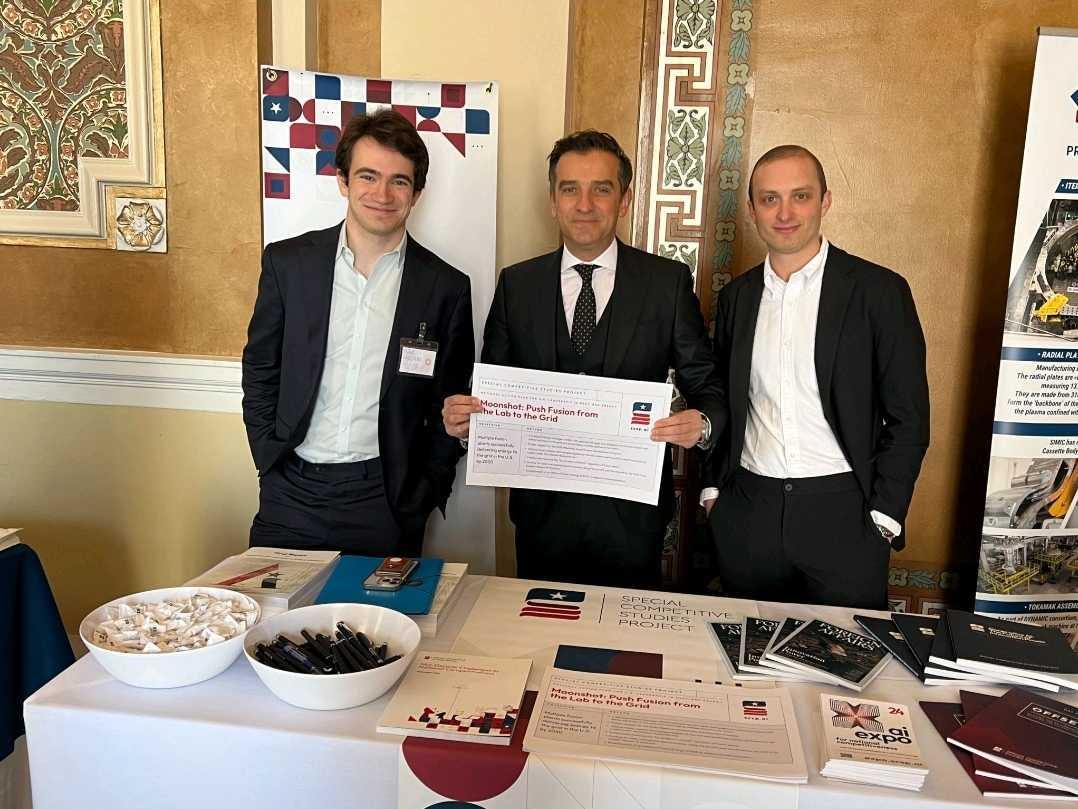
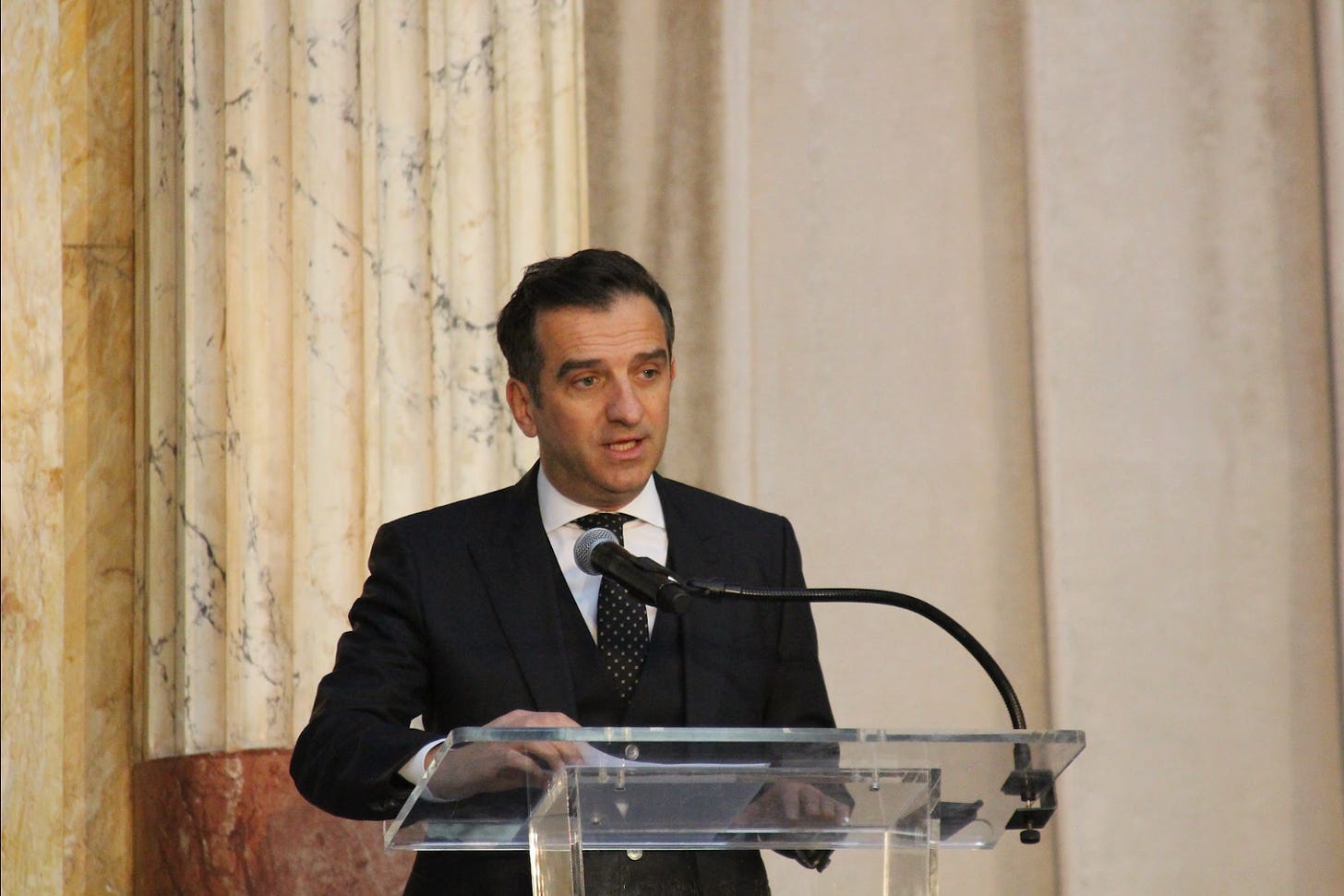
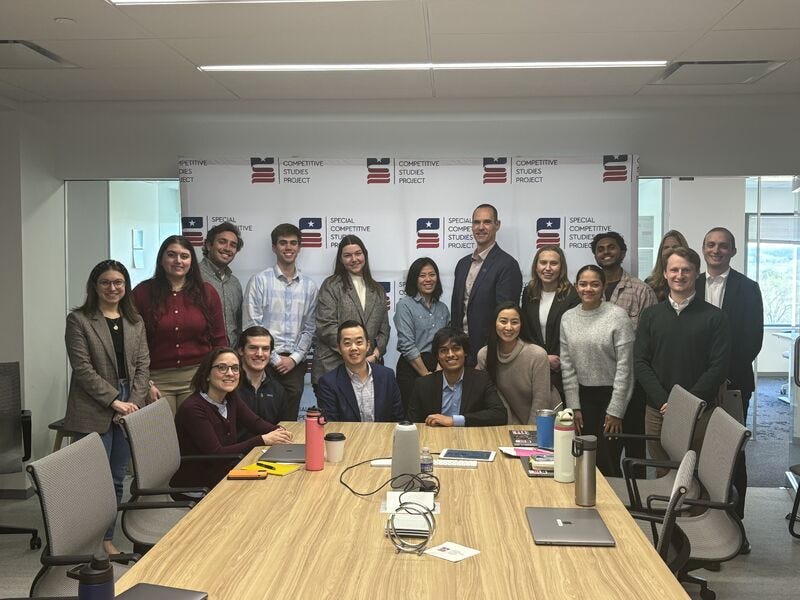
No comments:
Post a Comment